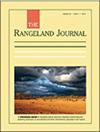中国供给侧改革视角下草饲畜产品对粮饲畜产品的替代效应
IF 0.9
4区 环境科学与生态学
Q4 ECOLOGY
引用次数: 1
摘要
明确中国未来农业结构转型的方向非常重要,特别是通过分析粮食消费结构升级的动态特征,特别是粮草畜产品之间的关系,并预测未来的粮食消费模式。基于食物当量单位(FEU)和耕地当量单位(ALEU),利用扩展线性支出系统分析了全国肉类消费弹性和区域变化的全国和区域间肉类消费弹性特征。同样,除了草饲畜产品对粮饲畜产品的替代效应外,还探讨了对未来草饲畜产品需求缺口的预测。结果表明:(1)2005 - 2012年,人均粮食消费量稳定在460 kg FEU /年。2000年以来,粮食饲畜产品消费基本稳定,草饲畜产品消费大幅增长;(2)在个体和区域尺度上,草食消费对粮饲畜产品消费存在替代效应;(3)到2035年,中国未来草饲畜产品总体需求缺口为1.14 × 1010 kg,需求主要集中在粮食种植区。根据各区域综合优势指数,将7个草地生态经济区划分为3个草地农业发展优先区。本文章由计算机程序翻译,如有差异,请以英文原文为准。
The substitution effect of grass-fed livestock products on grain-fed livestock products from the perspective of supply-side reform in China
Clarification of the direction of China’s future agricultural structural transformation is important, particularly by analysing the dynamic characteristics of upgrading the food consumption structure, especially the relationship between grain and grass-fed livestock products, and by predicting future food consumption patterns. Based on the food equivalent unit (FEU) and the arable land equivalent unit (ALEU), characteristics of meat consumption elasticity across China and between regions were analysed using the extend linear expenditure system for national meat consumption elasticity and regional changes. Similarly, in addition to the substitution effect of grass-fed livestock products on grain-fed livestock products, the prediction of the future gap in demand for grass-fed livestock products was explored. Results indicated that: (1) from 2005 to 2012, the per-capita food consumption on average has stabilised at 460 kg FEU per year. The consumption of grain-fed livestock products is stable, and that for grass-fed livestock products has increased dramatically since 2000; (2) there is a substitution effect of consumption of grass-fed on consumption of grain-fed livestock products on individual and regional scales; (3) By 2035, the overall demand gap for future grass-fed livestock products in China will be 1.14 × 1010 kg, and the main demand will be in grain farming areas. Based on the aggregated advantage index of each region, the seven grassland ecological-economic regions are divided into three priority groups for grassland agricultural development.
求助全文
通过发布文献求助,成功后即可免费获取论文全文。
去求助
来源期刊

Rangeland Journal
环境科学-生态学
CiteScore
2.90
自引率
8.30%
发文量
14
审稿时长
>36 weeks
期刊介绍:
The Rangeland Journal publishes original work that makes a significant contribution to understanding the biophysical, social, cultural, economic, and policy influences affecting rangeland use and management throughout the world. Rangelands are defined broadly and include all those environments where natural ecological processes predominate, and where values and benefits are based primarily on natural resources.
Articles may present the results of original research, contributions to theory or new conclusions reached from the review of a topic. Their structure need not conform to that of standard scientific articles but writing style must be clear and concise. All material presented must be well documented, critically analysed and objectively presented. All papers are peer-reviewed.
The Rangeland Journal is published on behalf of the Australian Rangeland Society.
 求助内容:
求助内容: 应助结果提醒方式:
应助结果提醒方式:


